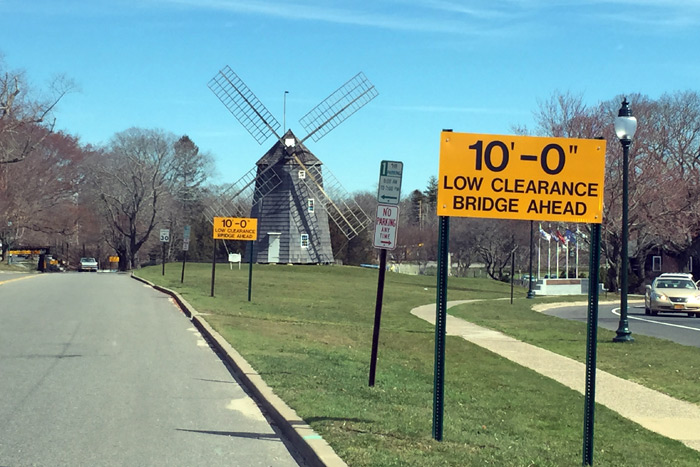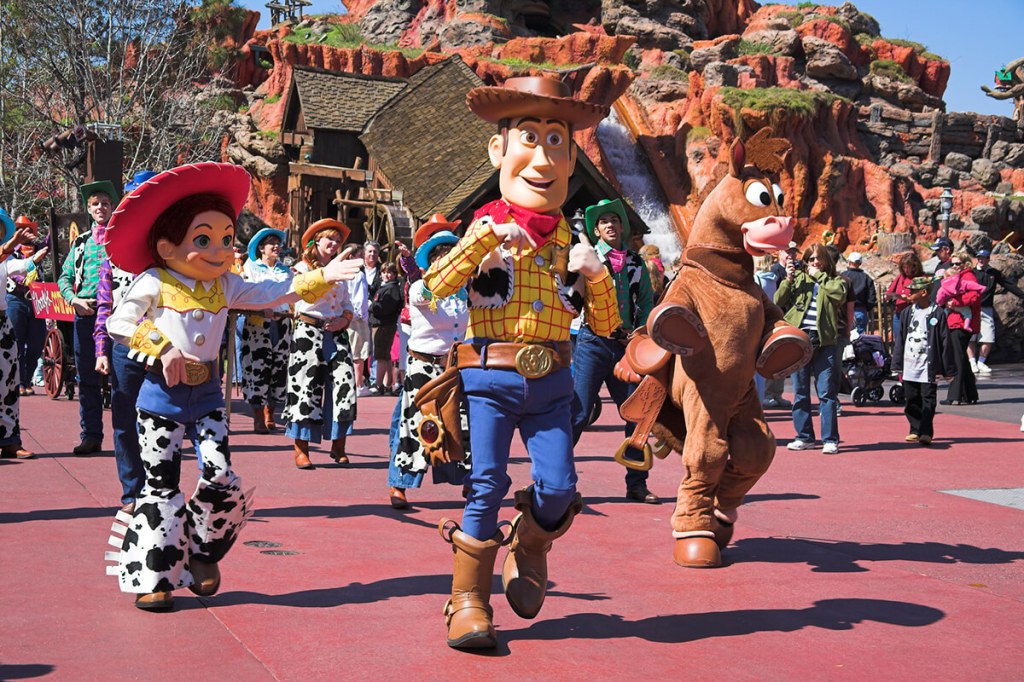East Hampton Town Squabble: To Move or Not to Move the Windmill

Last night, over 500 people packed into the meeting hall at the East Hampton firehouse for the third public meeting involving the plan to move the historic Old Hook Mill windmill on Main Street to the new farm museum on Cedar Street.
“This will be absolutely the last public meeting on this topic,” Village Mayor Hickenlooper said. He was referring to the second meeting on this topic, which occurred three weeks earlier and which was supposed to be the last. In front of him, about 50 people in the crowd held signs reading SAVE THE MILL and SHAME—and 1806, which was the date the historic wood shingled mill was built.
Nearly all in the crowd opposed the move. Still, there were a few who were in favor. There were two signs that read MOVE ON.
The Mayor explained once again why moving the mill was necessary. His explanation was interrupted frequently with boos.
“The State Department of Transportation wants this. The Long Island Rail Road wants this. And leaving it where it is simply too costly.”
He was referring to the fact that tall trucks, going down Main Street from the center of town, continue to smash into or get wedged in under the overhead railroad trestle just adjacent to the mill. It had been hoped that three enormous yellow road signs reading TEN FOOT CLEARANCE, which were installed last summer leading up to the trestle and partially blocking the view of the old windmill, would put a stop to this. But it has not.
“It’s all about the windmill,” the Mayor continued. “It continues to be a distraction. These truckers, they look at the pretty windmill. Then they hit the railroad trestle.”
The Mayor went on and on about the problem this mill has caused.
“Sometimes a truck gets wedged in under the bridge so bad it takes hours to get it out,” he said. “Traffic has to detour over to Town Lane then back up North Main Street to the traffic light in front of the IGA, and it is a mess.”
“How many times has that happened!” someone from the crowd shouted.
“Many, many times.”
“It’s a small price to pay.”
“I want to turn this over to our Highway Department Superintendent, Mr. Roads. Mr. Roads, please come up and tell us how many times the huge sign on the trestle has had to be replaced.”
Mr. Roads took the microphone.
“Too many times for me to mention,” he said.
The Mayor had taken his seat. “And what is the cost?”
“Each time, about $8,000 between material and labor. The men have to go up on a ladder to fix it, if it is bent, or put up a new one if it broke.”
“Let us speak,” a woman in the audience said.
“Okay,” the Mayor said. Thirty hands shot up.
“You there.”
“I am opposed to you moving the windmill.”
“Could you please give your name?”
“I am Charles Best. I have a house on the Circle in the center of town. That windmill is the very symbol of downtown East Hampton,” he said. “I see it on Main Street there every time I go out of my house. It still can grind grain into flour. It still functions. What else do we have that is over 200 years old and still functions like this?”
“The Mayor!” somebody shouted out. Laughter followed.
“If you move that mill down to the Farm Museum,” Best continued, “that would leave only one other mill in the village to carry on the tradition of the early settlers grinding flour here.”
“There are two others,” Mr. Roads said.
“No, just one. The one on James Lane,” Best continued.
“There are two on James Lane. The Gardiner Mill and the Home Sweet Home Mill.”
“I thought that was just one mill,” Best said.
“Order, order, we’ll have just one person speak at a time. Who else? You?”
The Mayor pointed to a small woman sitting facing him in the very first row.
“I’m Mrs. Ronald Carroll, and I think the mill should be moved,” she said.
“Where do you live, Mrs. Carroll?” the Mayor asked. He wanted to make sure everyone speaking was a member of the village.
“I live on Lily Pond Lane, sir,” she said.
“And why do you think it should be moved?” the Mayor asked.
“Because the way it is now, those three big yellow signs that say look out for the low trestle almost entirely block the view of the mill. It needs to be seen.”
“I would like to remind everyone,” the Mayor said, “that Main Street is a state-controlled road, and they have promised that if the windmill is not moved, they will put up three more big signs. Six signs will entirely block the view of Hook Mill.”
“We don’t want that,” somebody shouted from the audience.
“And the only other choice given us if we refuse to move it is they will knock it down and cart it away for firewood.”
The crowd murmured such things as “impossible,” and “outrageous.”
“Move the Mill!” somebody carrying a sign reading SAVE THE MILL shouted.
Others joined in the chorus.
“Wait a minute!” someone shouted from the rear.
“Mr. Testosteron, in the rear,” the Mayor said.
“Why can’t the railroad simply raise the trestle four feet, have the train go up a four-foot rise to cross it then down the four-foot rise when it gets to the other side?”
“We have looked into that,” Mayor Hickenlooper said. “It’s estimated cost would be $4 billion. That’s more than 30 years of our entire village budget.”
“Everyone can get under a 14-foot clearance,” Mr. Testosteron said, having apparently not heard the Mayor. “And trains go up hills and down. I bought my son a book called The Little Engine that Could, and in it…”
Whatever else he said was drowned out by murmuring. The Mayor used his gavel to restore order.
“The moving of the mill to the Farm Museum, on the other hand,” the Mayor said, “would only cost a few hundred dollars. These old mills used to get moved around all the time. They’re just positioned on large rocks at the base. You put lumber under them and lift them up. Teams of horses used to move them. And the Farm Museum is just on the other side of the railroad trestle. It will look beautiful there. We’ve got the barn there, the old farmhouse, now we’d have the windmill.”
“The windmill is 40 feet tall,” someone in the audience said. “It won’t fit under the trestle.”
“That’s true.” The Mayor looked startled.
“Even lain down on its side, it must be 12 feet at least,” the man continued. Someone shouted something. “I’m saying remove the windmill blades, of course. And it won’t fit under Town Line trestle, either.”
“We’re thinking of making it an event,” the Mayor said. “Lift it up, get horses to tow it up Newtown Lane and across the tracks at Cooper and then back down to North Main.”
“Mrs. Van, could you speak?” the Mayor asked Marina Van, head of the East Hampton Chamber of Commerce. She stood up.
“Yes. It could be quite a day.”
“And then,” the Mayor said, “without the distraction of the windmill where it is now, some of these drunken truckers would not be running into the trestle.”
“Would the State remove those incredibly ugly yellow signs?” someone in the audience asked. It was a person holding a SHAME sign.
“I don’t know,” the Mayor said. “All right, all right, we’ve heard enough.” He banged his gavel. “This public meeting is over. We will announce our decision next week.”
And with that, the people got up and slowly left the meeting hall to continue talking out on the street.



